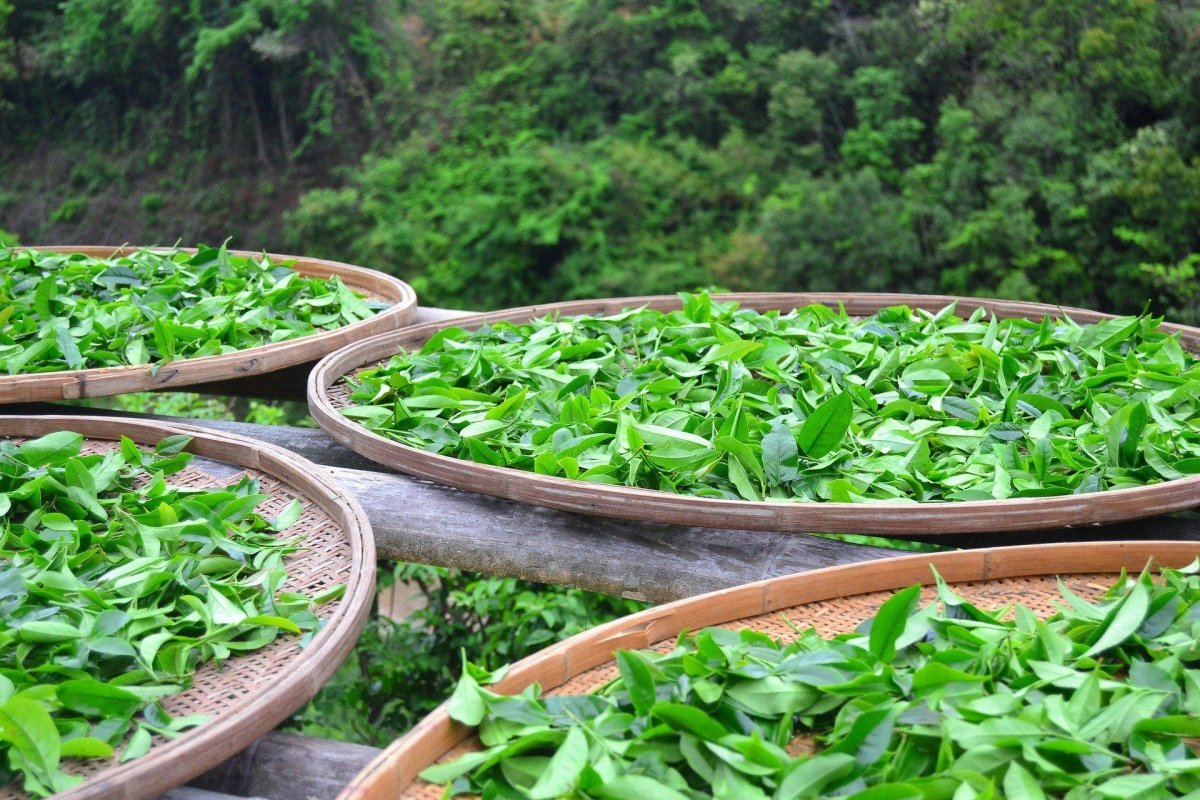How many tea harvest times are there per year in Taiwan and what influence do they have in terms of quality or taste of the tea varieties?
Most oolong teas in Taiwan are harvested 3-6 times a year depending on the cultivation methods used and the elevation of the growing area.
On tea plantations above 1500m, however, the tea leaves are often only harvested three times a year, some farms also practice this at lower altitudes to guarantee a higher quality tea harvest.
In Taiwan, the spring and winter harvest is mainly used for Oolong Tee used. In late spring and early autumn, the tea leaves are harvested for black teas used.
Some teas such as Dong Ding Oolong need a lot of time for the complex roasting process after harvesting. Roasted tea varieties are only available one month after the time of harvest at the earliest.
Unroasted oolong teas are ready for sale within a few days of being harvested. The spring harvest generally lasts from March to May and the winter harvest from October to December. Summer and autumn are of course in between, but vary depending on agricultural practices and the altitude of the tea-growing area.
In Taiwan, the differences in character and quality of tea throughout the year are more noticeable at higher altitudes. The highest growing areas, for example, for Da Yu Lin Located at about 2600m above sea level, there are only two harvests per year while most farms in Taiwan have at least four harvests per year such as for Four Seasons Oolong Tee.
In general, the taste and quality of most seasonal unroasted teas is fairly consistent. However, with the roasted teas, there may be larger deviations depending on how well the roasting process has been carried out.
For the sake of simplicity, we will only focus on the flavor profile in the following comparison:
spring harvest:
Known for its distinct floral aroma and a subtle sweetness in taste. This is due to the long regeneration phase of the plant during the winter period. During this period, the tea bushes have the opportunity to regenerate. At the same time, we plants grow more slowly due to the lower temperatures.
Summer crops:
Having a tendency to be more astringent the tea plant grows particularly rapidly during this period aided by the hotter weather in the summer months. If the oxidation process is skilfully carried out, this can still ensure a very good quality of the tea with a distinctive taste. If it rains a lot in the summer months, however, it can lead to the flavor composition being rather unspectacular.
Autumn Harvest:
Often has a more pronounced bitter quality. But this can also be a positive factor if a skilled tea master ensures a good balance in the taste of the tea.
winter harvest:
Known for its full-bodied character and viscosity in texture. This results from a slower growth phase and colder temperatures during the growing season.







0 comments